Circular RNA CDR1as disrupts the p53/MDM2 complex to inhibit Gliomagenesis
- PMID: 32894144
- PMCID: PMC7487905
- DOI: 10.1186/s12943-020-01253-y
Circular RNA CDR1as disrupts the p53/MDM2 complex to inhibit Gliomagenesis
Abstract
Background: Inactivation of the tumor suppressor p53 is critical for pathogenesis of glioma, in particular glioblastoma multiforme (GBM). MDM2, the main negative regulator of p53, binds to and forms a stable complex with p53 to regulate its activity. Hitherto, it is unclear whether the stability of the p53/MDM2 complex is affected by lncRNAs, in particular circular RNAs that are usually abundant and conserved, and frequently implicated in different oncogenic processes.
Methods: RIP-seq and RIP-qPCR assays were performed to determine the most enriched lncRNAs (including circular RNAs) bound by p53, followed by bioinformatic assays to estimate the relevance of their expression with p53 signaling and gliomagenesis. Subsequently, the clinical significance of CDR1as was evaluated in the largest cohort of Chinese glioma patients from CGGA (n = 325), and its expression in human glioma tissues was further evaluated by RNA FISH and RT-qPCR, respectively. Assays combining RNA FISH with protein immunofluorescence were performed to determine co-localization of CDR1as and p53, followed by CHIRP assays to confirm RNA-protein interaction. Immunoblot assays were carried out to evaluate protein expression, p53/MDM2 interaction and p53 ubiquitination in cells in which CDR1as expression was manipulated. After AGO2 or Dicer was knocked-down to inhibit miRNA biogenesis, effects of CDR1as on p53 expression, stability and activity were determined by immunoblot, RT-qPCR and luciferase reporter assays. Meanwhile, impacts of CDR1as on DNA damage were evaluated by flow cytometric assays and immunohistochemistry. Tumorigenicity assays were performed to determine the effects of CDR1as on colony formation, cell proliferation, the cell cycle and apoptosis (in vitro), and on tumor volume/weight and survival of nude mice xenografted with GBM cells (in vivo).
Results: CDR1as is found to bind to p53 protein. CDR1as expression decreases with increasing glioma grade and it is a reliable independent predictor of overall survival in glioma, particularly in GBM. Through a mechanism independent of acting as a miRNA sponge, CDR1as stabilizes p53 protein by preventing it from ubiquitination. CDR1as directly interacts with the p53 DBD domain that is essential for MDM2 binding, thus disrupting the p53/MDM2 complex formation. Induced upon DNA damage, CDR1as may preserve p53 function and protect cells from DNA damage. Significantly, CDR1as inhibits tumor growth in vitro and in vivo, but has little impact in cells where p53 is absent or mutated.
Conclusions: Rather than acting as a miRNA sponge, CDR1as functions as a tumor suppressor through binding directly to p53 at its DBD region to restrict MDM2 interaction. Thus, CDR1as binding disrupts the p53/MDM2 complex to prevent p53 from ubiquitination and degradation. CDR1as may also sense DNA damage signals and form a protective complex with p53 to preserve p53 function. Therefore, CDR1as depletion may play a potent role in promoting tumorigenesis through down-regulating p53 expression in glioma. Our results broaden further our understanding of the roles and mechanism of action of circular RNAs in general and CDR1as in particular, and can potentially open up novel therapeutic avenues for effective glioma treatment.
Keywords: CDR1as; DNA damage; Glioma; MDM2; p53.
Conflict of interest statement
The authors have no commercial or other associations that might pose a conflict of interest.
Figures
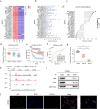
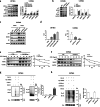
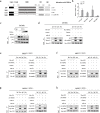
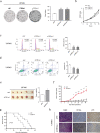
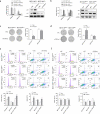

References
Publication types
MeSH terms
Substances
Grants and funding
LinkOut - more resources
Full Text Sources
Research Materials
Miscellaneous

